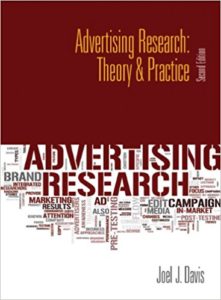A successful advertising campaign is one of the most difficult tasks to accomplish. This is because the smallest error can throw an entire campaign’s message off. The reason great advertising campaigns are so hard to come across is because there is often a lack communication between departments.
Surprisingly, being a writing tutor and an advertising major have similar approaches to achieving success. As a writing tutor one must clearly communicate with the writer about what it is that they want to achieve. Similarly, advertising agencies must work closely with other departments and clients to understand a brands objective and how they will achieve them.
This leads us to the 4 essential steps of collaboratively setting an agenda in advertising: research, defining objectives, strategic planning, and creative executions. The point of this post is to demonstrate the importance of collaboratively working together in a working environment. In this case, I will be discussing the similarities of agenda setting in advertising and tutoring here at the University Center for Writing-based Learning (UCWbL).
 Step 1: Research
Step 1: Research
Research is essential for any academic assignment, and the same goes for running an advertising campaign. According to Joel Davis there are three important aspects throughout the advertising planning process (Davis 2, 2012).
He claims that:
- Paths are flexible
- One could address multiple areas concern
- OR one could focus on specific area
- Feedback and Revision is key
- Insights can help guide, inform, and revise decisions.
- Advertisers can start at any point
- Can start research anywhere they’d like.
- For example, researchers could focus on creative development OR media.
So, how do these advertising research aspects relate to the role of a writing tutor. Well:
- At the UCWbL we typically focus on 1-3 goals we want to achieve with our writers.
- We provide feedback and suggestions for revisions.
- Additionally, we help writers at any point of their writing process.
Step 2: Defining Objectives
Donald Parente states, “In an advertising or marketing campaign, all of the strategies and tactics-including creative ideas-are designed to achieve certain results” (Parente 104, 2006). These objectives provide accountability and direction for advertisers. It allows them to stay focused, organized, and stress less.
The most important aspect of these objectives is that they are always measurable. Parente claims there are 4 steps to quantifying advertising objectives:
- Estimate marketing objectives as sales or market share.
- Determine the role advertising plays in the overall marketing mix.
- Set budget and plan media objectives.
- Revise media objectives.
Setting objectives is similar to setting an agenda and goals at the UCWbL because the tutor and writer can communicate what it is that they want to achieve in each appointment. Additionally, advertising and tutoring goals are always SMART: Specific, Measurable, Attainable, Relevant, and Time Bound.
Step 3: Strategic Planning
In 1960, E. Jerome McCarthy came up with the framework called the marketing mix: the 4 P’s. Since then there has been multiple modifications to the framework, but his theory is still used to strategically plan ad campaigns and guide marketing campaigns.
Sandra Moriarty et al. explains the 4 P’s and their role in the marketing mix as (Moriarty et al. 41, 2009):
Product
- Branding
- Packaging
- Customer Value
Price
- Payment Methods
- Discounts
- Overall Cost
Place
- Distribution
- Location
- Convenience
Promotion
- Message
- Channels
- Communication
The 4 P’s relate to the UCWbL mission to help writers achieve their goals through their mission, core values, beliefs, and practices. In other words, this step is about providing methods for execution.
Step 4: Creative Executions
The fourth and final step to collaboratively setting an agenda in advertising deals with the creative brief. This step is where all of the other departments in ad agency come together to provide the creative team with a brief of their problems, insights, and opportunities.
Winston Fletcher discusses that advertising strategy is essential for the creative team to develop a successful ad campaign (Fletcher 68, 2010). He states that the creative brief consists of:
- Realistic objectives
- Competitors
- Target market
- Previous campaigns results
- Market research
- Why consumer’s do & don’t use the brand
- Message & Tone
- Media
- Budget
- Schedule/Timetable
This final step is arguably the most important when collaboratively setting an agenda, because it is how the big idea will be delivered to the brands audience. In essence, the creative executions are what solves the brands problems.
Similarly, applying theories and methods to each appointment at the UCWbL is how a tutor and writer can successfully achieve the objectives in each appointment.
In summary, collaboratively setting an agenda to guide your work is arguably one of the most important UCWbL core practices, because it allows our time to be managed efficiently and effectively. This step allows writers to express their needs and concerns which can be helpful as we work with them to revise their work.
References
Davis, Joel J. Advertising research: theory and practice. 2nd ed., Prentice Hall, 2012.
Fletcher, Winston. Advertising: A Very Short Introduction. Oxford University Press, 2010.
Moriarity, Sandra , et al. Advertising principles & practice. 9th ed., Pearson Prentice Hall, 2009.
Parente, Donald E. Advertising Campaign Strategy: a Guide to Marketing Communication Plans. 4th ed., Thomas South-Western, 2006.
Discover more from UCWbLing
Subscribe to get the latest posts sent to your email.
